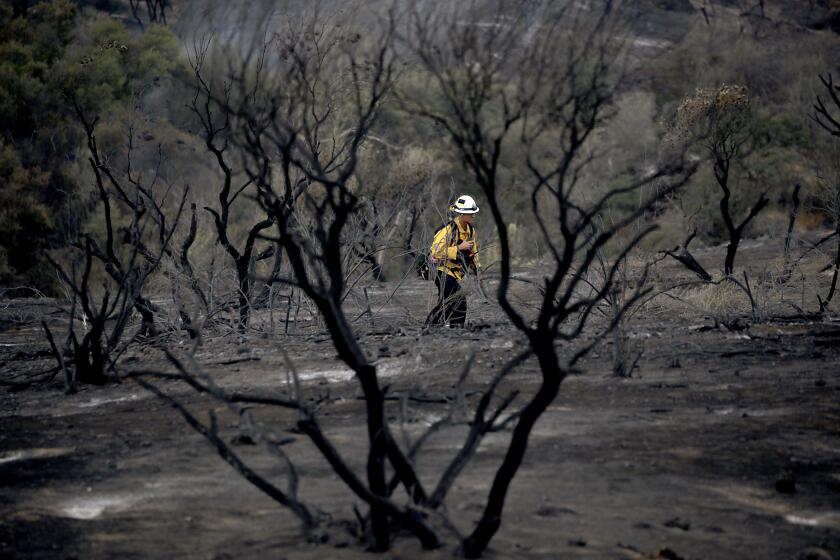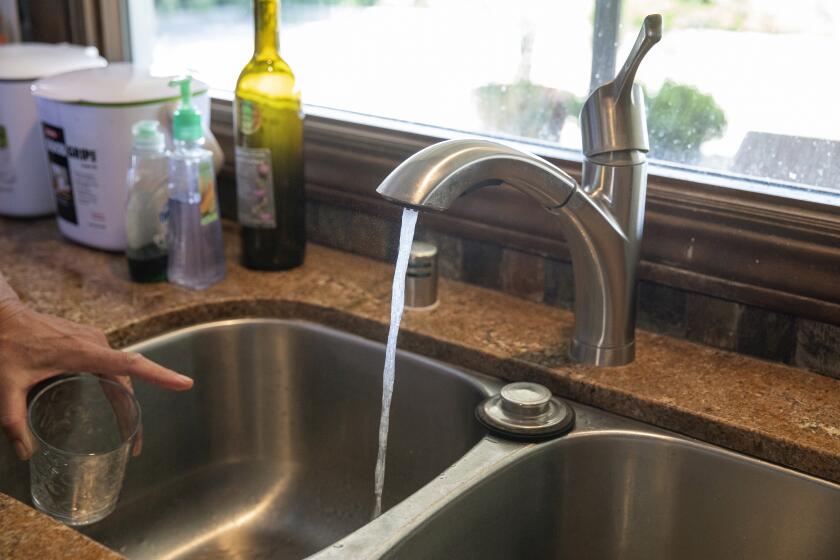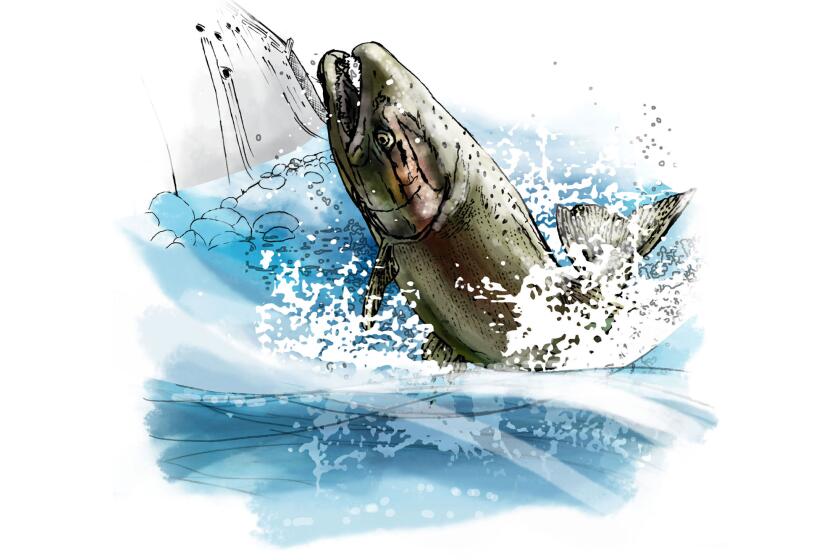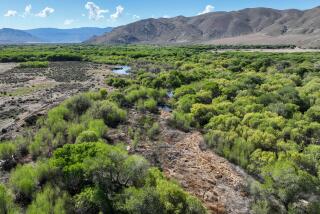As California droughts intensify, ecosystems and rural communities will bear the brunt
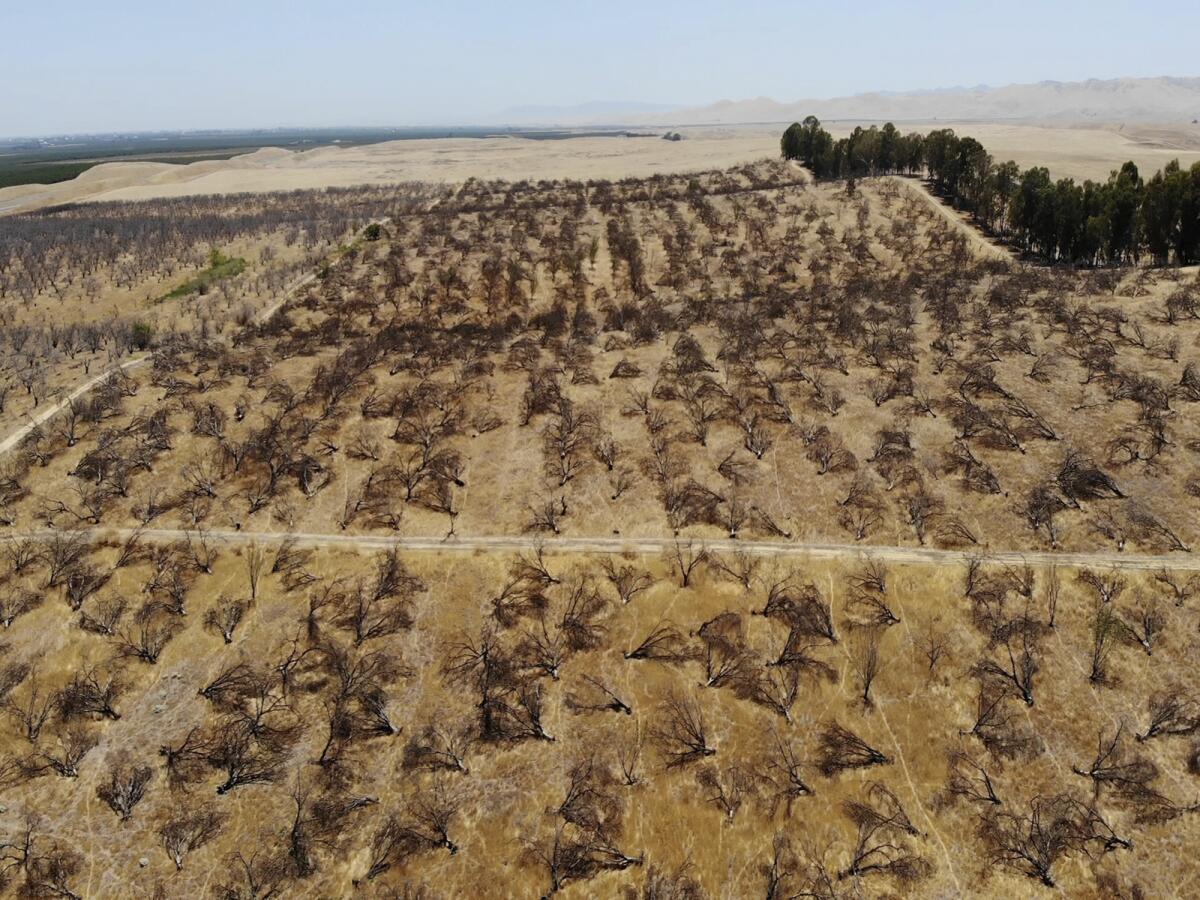
Drought, human-caused climate change, invasive species and a “legacy” of environmental issues are permanently altering California’s landscape and placing some communities and ecosystems at increasing risk, a panel of experts told water officials recently.
Invasive species and decades of disruptions from massive land and water developments are partly responsible for a continuous decline in native California species, experts told the California Water Commission on Nov. 16. Also, rural communities, many of whom are lower income and rely on privately owned wells, are disproportionately contending with water contamination and scarcity amid recurring cycles of drought, experts said.
Although droughts in California date back to prehistoric times, the state’s modern-day water issues are the repercussions of decades of decisions, said Jay Lund, professor of civil and environmental engineering at UC Davis.
“A lot of our environmental problems today are really legacies,” he said. We are witnessing “the dynamics of past impacts and past changes playing themselves out and our inability — both in terms of regulatory policy and economically, and practically in some cases with some invasive species — to manage that playing out of legacy impacts.”
The state report paints a stark picture of California’s escalating climate crisis and documents wide-ranging effects on weather, water and residents.
Groundwater and the Sacramento-San Joaquin River Delta are also among the sectors most vulnerable to dry periods, according to Lund, who emphasized that although cities and agriculture are relatively prepared and well-insulated from drought impacts, irrigated agriculture needs to shrink between half a million and 2 million acres to be sustainable.
About 5.5 million of California’s nearly 40 million residents live in rural counties, which make up more than half the state’s land mass. While urban areas like Los Angeles are under mandatory drought restrictions to reduce strain on state reservoirs, many rural residents reliant on groundwater wells are waterless. Compounding the issue is water affordability and a lack of safe drinking water, particularly in the Central Valley and Central Coast.
“We know that these challenges disproportionately impact low-income and Latino communities,” said Justine Massey, policy manager and attorney for the Community Water Center. “People relying on private wells in particular are significantly impacted because often they don’t know if their water is safe to drink since there’s no other entity doing water testing, and they’re also not aware until they start experiencing issues with pumping that they may be nearing water levels that will render their well not working.”
Although state legislation such as the Sustainable Groundwater Management Act is meant to regulate water availability and will help mitigate water scarcity in an increasingly arid California, thousands of people and delicate ecosystems will fall through the cracks.
A 2020 study commissioned by the Water Foundation found that under SGMA’s minimum water threshold plans, between 4,000 and 12,000 wells will partially or completely dry out by 2040 just in the San Joaquin Valley — affecting roughly 46,000 to 127,000 Californians who may lose access to their current water supply.
The Water Rate Assistance Program, which Gov. Gavin Newsom vetoed last month, would have created a water affordability program for low-income households.
“We really urge all decision-makers involved… to look at the worst-case scenarios and really plan for that, because that’s what we’re experiencing so far — worst case after worst case after worst case,” Massey said. “And the folks who are most impacted are the ones who least contributed to the problem.”
Climate change is increasingly being recognized as a “threat multiplier” that will accelerate and aggravate instability and insecurity around the world. In a drought-stricken California, as groundwater levels drop because of less rain and over pumping, concentrations of contaminants in water increase, Massey said.
The current and future health of California’s ecosystems is also on the line.
Mild, short-term impacts of drought can result in reduced plant growth, but when dry periods are longer and harsher and groundwater depletion is more severe, widespread mortality of habitats and species can occur, said Melissa M. Rohde, principal of limited-liability company Rohde Environmental Consulting.
“If groundwater demand is high, groundwater can quickly become out of reach from plant roots and rivers because these ecosystems rely on shallow groundwater,” she said.
Rohde referenced the Nature Conservancy’s Shallow Groundwater Estimation Tool, which found that 44% of ecosystems statewide have been impacted by a significant, long-term decline in groundwater between 1985 and 2019. “We also found that groundwater levels declines have intensified during the most recent two decades,” she said.
Under SGMA, 87% of ecosystems and 40% of wells dependent on groundwater exist outside of the legislation, Rohde said, and “one of the biggest disconcerting aspects of this is that... these ecosystems are often times the last refugia for federal and state threatened and endangered species. They’re very important biological hotspots, and if we’re not doing what we can to protect them under SGMA, we are not safeguarding our most vulnerable species.”
As dams and global warming push endangered California salmon to the brink, a rescue plan is taking shape — and a tribe pushes for recovering their sacred fish.
Drought conditions and extreme heat fueled by climate change have also pushed the chinook salmon to the brink of extinction.
The fish — which once swam upstream the Sacramento River to spawn in its chilly waters before the Shasta Dam’s completion in 1945 — has struggled to survive even with government intervention. Last year, the water flowing from Shasta Dam was so warm that most of the eggs and young salmon died.
Wildfires, drought and bark beetle infestations are also destroying the forests of the southern Sierra Nevada, which could have dire consequences for spotted owls, Pacific fishers and other protected species that depend on mature tree canopies for their habitats.
But refusing to accept these changes is pointless, Lund said. “Resistance is futile. We’re going to have a future that’s going to be different,” and learning to reconcile our ecosystems with human activity will be an ongoing challenge. “How do you manage your native species when everything else is changing is going to be a big conundrum for all of our agencies and all the people trying to do this,” he said.
So what can we do about it? For ecosystems, integrating them into water policies, identifying ecological oases and managing groundwater to ensure species have access to it during droughts will be critical, Rohde said.
As for rural communities, Lund suggested we look at how and why urban and agricultural spaces have responded more effectively to drought: Their missions are focused; they have reliable funding sources; they have organized authority and expertise; and they have accountability via voters, regulators and ratepayers.
“The state has the responsibility to make sure that drinking water needs are protected and not waved away as a cost of business or set aside as something that’s too difficult or inconvenient to address,” Massey said.
“Climate change is testing and surpassing our limits and our normal flexibility,” she added. “The margin of error becomes tighter and tighter. That margin of error is already extremely thin, and what’s on the line is Californians’ access to a life-giving resource.”
More to Read
Sign up for Essential California
The most important California stories and recommendations in your inbox every morning.
You may occasionally receive promotional content from the Los Angeles Times.
